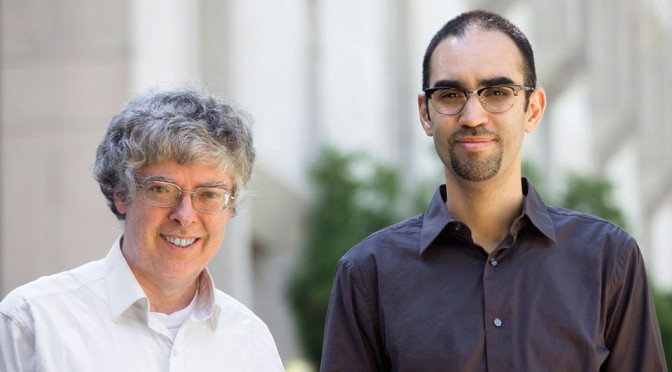Sitting in his office amid stacks of unkempt papers and books, Jeffrey Price must swat away a fruit fly now and then as he discusses his research.
It would probably be more surprising if there were no insects buzzing around him. Price, an associate professor of the School of Biological Sciences and the Department of Neurology and Cognitive Neuroscience in the School of Medicine at UMKC, has made his life’s work studying the molecular makeup of fruit flies. He wants to figure out exactly what regulates the tiny organisms’ circadian rhythms.
Price and Samuel Bouyain, the UMKC School of Biological Sciences and Department of Neurology and Cognitive Neuroscience colleague who is collaborating with Price on his current research, have zeroed in on a specific protein they believe has potential to unlock the mystery of how the fruit fly’s “clock” works.
If they can figure out how to manipulate that clock, they believe the discovery could inform scientists studying human circadian rhythms, which could have implications in many areas of health research.
“If your clock is out of sync, there are very serious health ramifications,” Price says.
According to research, night shift workers who don’t sleep when their clock tells them to are more likely to end up with cancer, heart conditions, diabetes and other diseases. Since the molecular structure of a fruit fly circadian clock is very similar to that of a human circadian clock, the jump from bug to person probably isn’t terribly far.
“I believe this is going to apply to humans,” Price says.
Price and Bouyain, also an associate professor of biology, published research last year about a new protein in the neuroscience journal Neuron. The protein, they call “bride of double time” specifically relates to the protein “double time,” that Price discovered in 1992 as a post-doc in New York.
The double time protein regulates fruit flies’ circadian rhythms. But it is also tied to many other functions. If the flies don’t have it, they won’t survive, so turning it off isn’t an option. But the bride of double time/double time pair seems to be a more specific target that could help scientists control the sleep clock without affecting anything else.
Price found the bride of double time protein three years ago, but he didn’t know much about it other than the fact that it was paired with double time — and it was related to the fruit flies’ circadian rhythms. As he was trying to figure out more about the new protein, he turned to Bouyain, who offices across the hall. Bouyain, who heads an X-ray crystallography lab in biological sciences, was intrigued.
“The question is, what is this protein?” Bouyain says.
He joined Price to help find an answer and eventually developed a blue print of the new protein’s structure.
“My lab figured out how it looks in three dimensions,” Bouyain says. “As we did this, we figured out how it might function.”
The researchers hope they can move to the next step, which is understanding how the protein associates with other proteins like double time. If they can do that, there may be chemicals that can inhibit that association. And that could be the key to regulating
the clock.
“Humans don’t have bride of double time, but they have proteins that look like it,” Price says.
And proteins that look alike often act alike, he says.
“For me, what keeps me digging, is that regulating these proteins is at the core of the clock,” Price says. “My goal is to find the real gears.”



